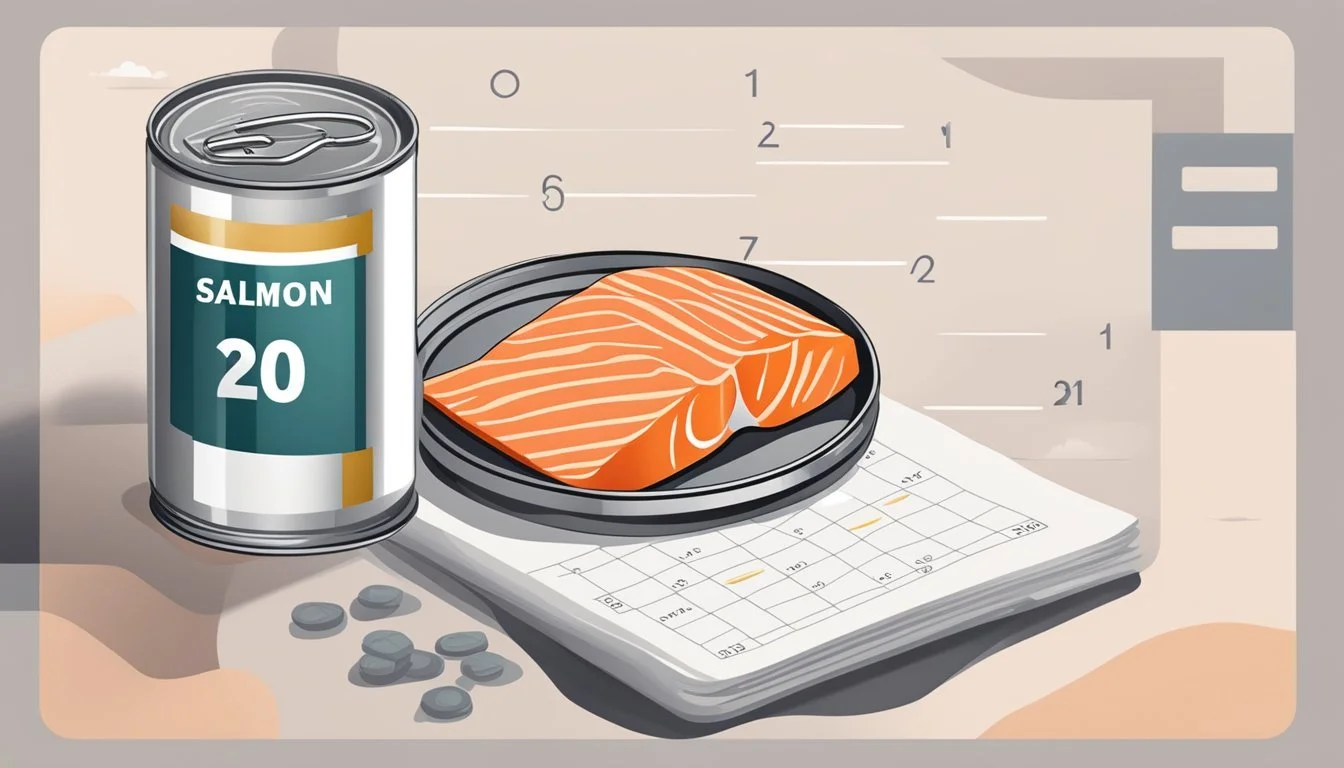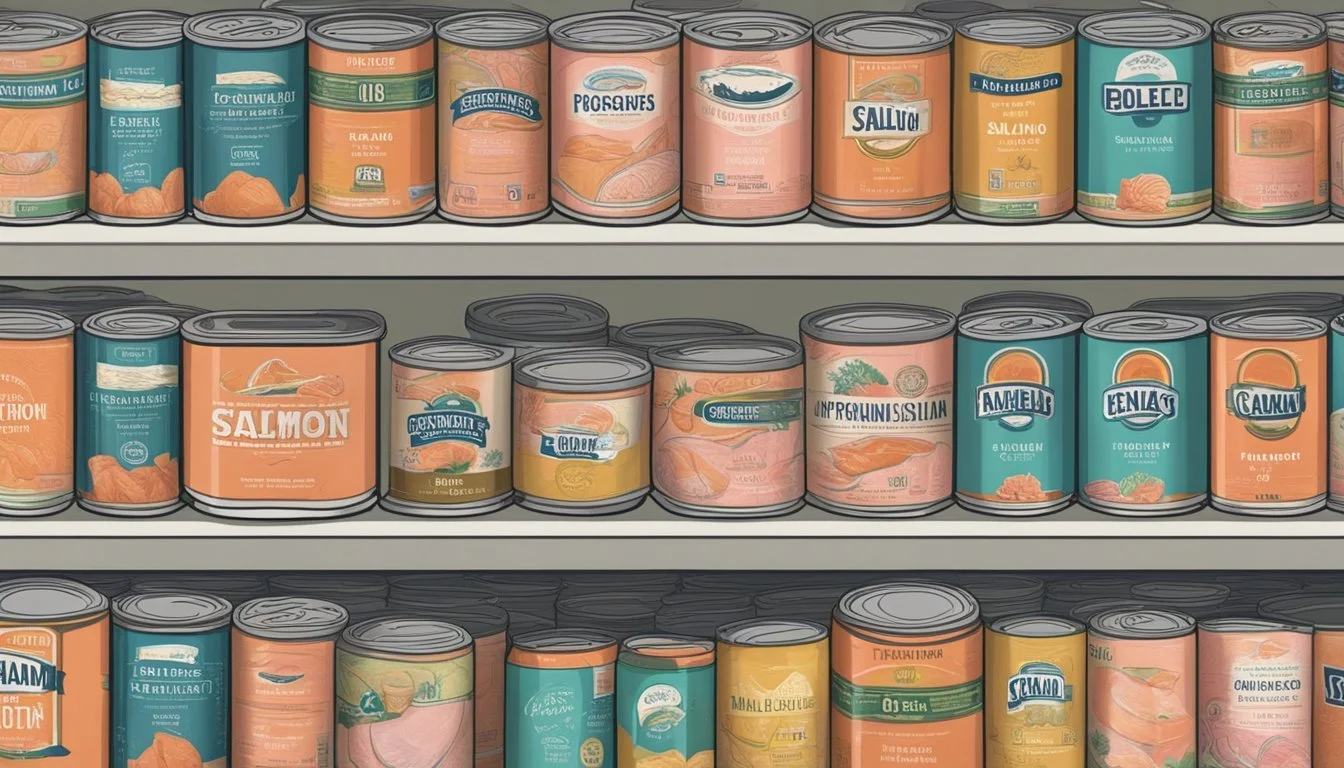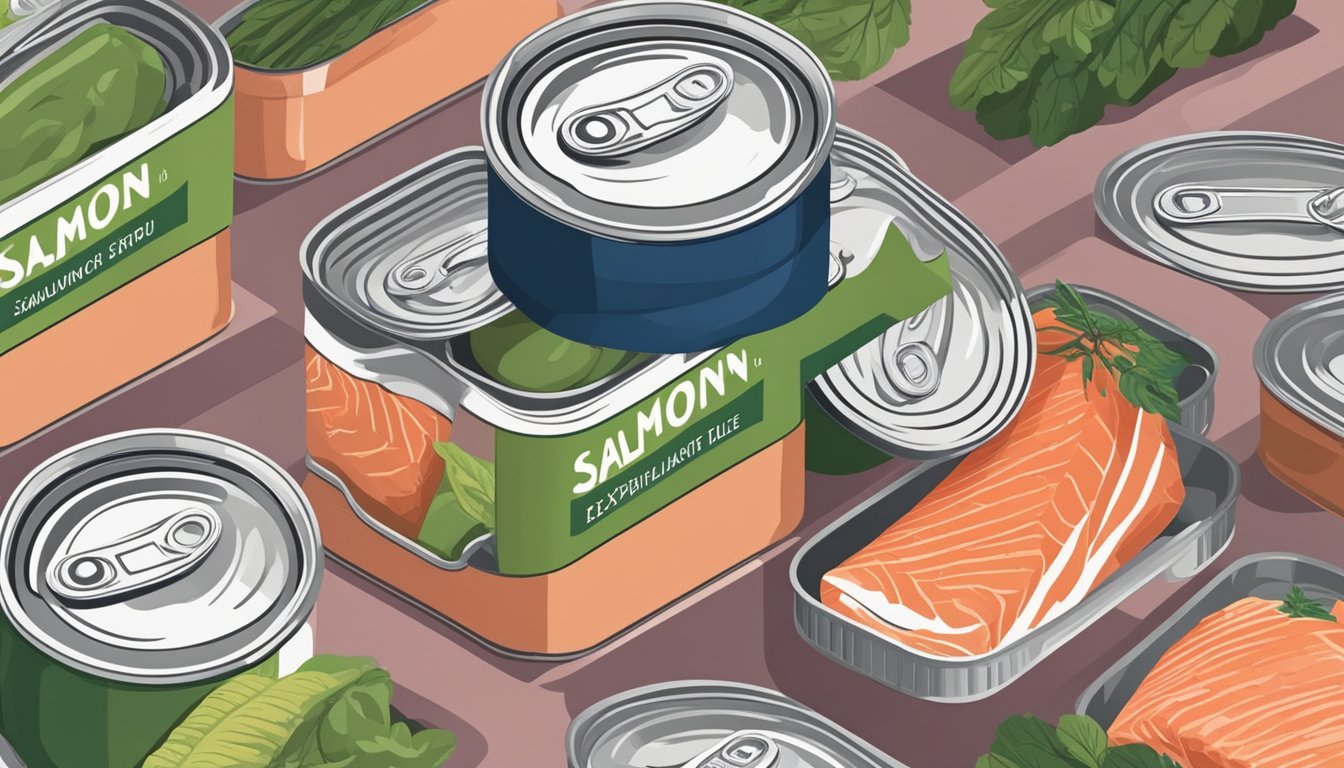Does Canned Salmon Expire?
Shelf Life Insights
Canned salmon is a pantry staple that comes in handy for quick meals and emergency supplies. Many wonder if it ever truly expires and how long it remains safe to eat. Properly stored, unopened canned salmon can remain at its best quality for about three to five years. Beyond this period, the quality may slowly decline, but the product can still be safe to consume if the can is undamaged and stored correctly.
Storage conditions play a significant role in the longevity of canned salmon. Keeping the cans in a cool, dry place away from direct sunlight and extreme temperatures ensures that the fish retains its quality for as long as possible. Care should be taken to avoid exposing the cans to high heat, humidity, or other adverse conditions that could accelerate the deterioration process.
It’s important to check the "Best Before" date on the can as a guide, though many cans will still be good past this date if they have been stored properly. This makes canned salmon not only a versatile and nutritious option but also a reliable one for long-term storage.
Overview of Canned Salmon
Canned salmon is a popular pantry staple known for its nutritional value and versatility. This section will cover the definition and types of canned salmon, as well as its health benefits.
Definition and Types of Canned Salmon
Canned salmon is salmon that has been cooked and sealed in an airtight container. This preservation method allows for a long shelf life while retaining nutritional benefits. There are mainly two types of canned salmon:
Sockeye Salmon (Red Salmon): Known for its rich flavor and robust nutritional profile.
Pink Salmon: Milder in flavor and usually more affordable than sockeye salmon.
The canning process involves cooking the salmon at high temperatures to kill bacteria and seal the nutrients.
Health Benefits of Canned Salmon
Canned salmon is packed with omega-3 fatty acids, which are essential for heart health. Regular consumption can help lower the risk of heart disease. Additionally, canned salmon is a good source of protein, making it ideal for muscle repair and growth.
The fish is also rich in vitamins such as Vitamin D, which supports bone health, and Vitamin B12, crucial for nerve function. Moreover, it provides calcium from the softened bones, supporting bone health. Essential nutrients like selenium contribute to overall well-being by acting as antioxidants.
In summary, canned salmon offers a convenient way to integrate high-quality nutrients into everyday meals. The combination of omega-3 fatty acids, protein, vitamins, and essential minerals makes it a valuable addition to a balanced diet.
Understanding Expiration Dates
Canned salmon often comes with various date labels such as "best by" or "use-by," which can be confusing. It is crucial to understand these labels to make informed decisions about the safety and quality of the product.
Best By Versus Use-By Dates
Best By dates indicate the period during which the product is expected to be at its peak quality. This doesn't mean that the food will expire after this date but rather that its taste, texture, and nutritional quality may decline.
Use-By dates, on the other hand, are more about safety. They suggest the last date recommended for using the product while it is still in good quality and safe to consume. Consuming the product after this date is not recommended.
It is essential to properly interpret these dates to ensure that you are consuming the canned salmon while it is still safe and of high quality.
Interpreting Date Labels on Canned Salmon
Many canned salmon products will have different labels such as "best-before," "best if used by," and "best when used by." These labels generally reflect the manufacturer's estimate of how long the product will remain at its best quality.
Canned salmon stored in optimal conditions (cool, dry place) is usually safe to eat even after these dates, but its quality may not be guaranteed.
Looking at these labels can provide guidance on when to use the product for the best taste and quality. It is also advisable to inspect the can for any signs of damage or spoilage before consuming.
Understanding these labels can help you make smarter choices about food consumption and reduce waste.
Storage Fundamentals
Canned salmon retains its best quality when stored properly. Critical aspects such as storage conditions, temperature, and humidity significantly impact its shelf life and safety.
Proper Storage Conditions for Canned Salmon
Unopened canned salmon should be stored in a cool, dark place such as a pantry. It is crucial to keep the cans in a dry area to prevent rusting and spoilage. The ideal room temperature is below 85°F to maintain optimal quality.
After opening, transfer the salmon to an airtight container and place it in the refrigerator. Consume within 2-3 days. Proper storage practices like keeping the storage area clean help avoid contamination and extend the shelf life.
Impact of Temperature and Humidity on Canned Goods
Temperature and humidity play a pivotal role in the shelf life of canned salmon. High temperatures can speed up the deterioration of the food, while excessive humidity can cause the cans to rust, leading to possible contamination.
Storing canned salmon in a cool, dry place minimizes these risks. Under extreme temperatures or humid conditions, the food quality may degrade, increasing the likelihood of spoilage. Always aim for a stable environment to maintain the integrity and safety of canned goods.
Shelf Life Determinants
The shelf life of canned salmon depends on several factors. Proper storage and understanding signs of quality loss are crucial for ensuring safety and taste.
Factors Affecting Canned Salmon Shelf Life
Several elements influence how long canned salmon maintains its peak quality:
Storage Conditions: Storing cans in a cool, dry place away from direct sunlight and temperature extremes is vital. Consistent storage temperature prevents spoilage and extends shelf life.
Canning Process: The method used in the canning process—such as vacuum sealing—affects the durability of the salmon. High-temperature processing ensures the elimination of bacteria, enhancing shelf stability.
Additives and Preservatives: If preservatives are added during canning, they can prolong shelf life by preventing bacterial growth. Natural canned salmon without additives may have a shorter peak quality period.
Integrity of the Can: Physical can damage, such as dents or rust, can lead to reduced shelf life. Check the can's condition regularly.
Identifying Loss of Peak Quality
Monitoring changes in canned salmon helps in identifying loss of quality:
Appearance: Look for signs like discoloration or a swollen can. These indicate potential spoilage.
Smell: A foul or unusual odor upon opening signifies quality loss. Fresh canned salmon should not have an off-putting smell.
Texture: The texture should remain firm and moist. If it turns mushy or dry, it may indicate spoilage.
Taste: A metallic or other odd taste can be a sign that the salmon is no longer at its peak quality.
By following these guidelines, one can ensure the safe and enjoyable consumption of canned salmon.
Signs of Spoilage and Food Safety
Understanding the signs of spoilage in canned salmon is crucial for ensuring food safety and preventing health risks. Properly identifying visual and sensory indicators, along with knowing the potential risks involved in consuming spoiled products, can help avoid foodborne illnesses.
Visual and Sensory Indicators of Spoiled Canned Salmon
Visual Indicators:
Bulging or Swelling: A swollen can often indicates bacterial growth, which can cause dangerous toxins.
Rusting or Severe Dents: These can compromise the can’s seal, leading to contamination.
Leaking: Any leakage signifies that the can's contents may be compromised.
Sensory Indicators:
Discoloration: Fresh canned salmon should maintain a consistent pinkish color. Any deviation might indicate spoilage.
Off Odor: A sour or foul smell is a sign that the salmon has spoiled.
Texture: If the texture appears mushy or slimy, it might not be safe to eat.
Risks Associated with Consuming Spoiled Canned Products
Consuming spoiled canned salmon poses significant health risks. Food poisoning can result from bacterial contamination, like Clostridium botulinum, which thrives in anaerobic environments common in canned foods.
Nausea and Vomiting: Early signs of bacterial contamination.
Diarrhea: A frequent consequence of ingesting spoiled food.
Fever and Chills: Indicators that the body is fighting a bacterial infection.
Potential Long-term Effects:
Hospitalization: Severe cases may require medical attention.
Chronic Conditions: Long-term exposure to certain toxins can lead to chronic health issues.
By paying attention to these spoilage signs and understanding the associated risks, consumers can make safer decisions about their canned salmon products.
Handling Opened Canned Salmon
Once a can of salmon is opened, careful handling is essential to maintain its freshness and prevent spoilage. Key factors include proper storage and consideration for longer-term preservation through freezing.
Storage of Leftovers
Opened canned salmon should be transferred from the original can to an airtight container. This minimizes exposure to air and bacteria, which can spoil the fish. Refrigeration is crucial: place the sealed container in the refrigerator at 40°F or below. Consuming the leftovers within 3-4 days ensures optimal quality and safety.
Handling Tips:
Use clean utensils to prevent cross-contamination.
Label containers with the date of opening.
Avoid leaving the salmon at room temperature for extended periods.
Proper storage practices will help maintain the taste and nutritional value of the salmon while reducing the risk of foodborne illnesses.
Freezing for Extended Preservation
For those needing to keep the salmon longer, freezing is a viable option. Transfer the salmon to a freezer-safe, airtight container or vacuum-seal it to eliminate air and prevent freezer burn. Ensure the freezer temperature is set to 0°F or lower.
Steps for Freezing:
Place the salmon in a single layer in the container.
Label the container with the date.
Ensure the container is securely sealed.
Frozen salmon can be kept for up to three months. When ready to use, thaw it in the refrigerator to maintain quality. Avoid refreezing once thawed, as this can degrade the texture and flavor.
Practical Tips and Usage
Canned salmon is incredibly versatile, offering a convenient addition to a variety of meals and other uses. Proper storage and creative incorporation can maximize its utility.
Incorporating Canned Salmon into Recipes
Canned salmon can elevate numerous dishes owing to its rich flavor and nutritional benefits. It works beautifully in salads; adding salmon to fresh greens with a drizzle of vinaigrette creates a satisfying meal. For a heartier option, consider salmon patties: mix the salmon with breadcrumbs, egg, and seasonings, then fry or bake.
For pasta lovers, tossing canned salmon with your favorite pasta and vegetables makes a quick, delicious dinner. It also complements soups and chowders, infusing them with depth and protein. Try salmon salad sandwiches by mixing canned salmon with mayo, celery, and spices, perfect for a quick lunch.
Extend Canned Salmon Utility Beyond Human Consumption
Beyond human meals, canned salmon can serve as a nutritional treat for pets. Mixing a small amount into your dog or cat's regular food can add moisture and essential nutrients. It’s important to consult your veterinarian for portion recommendations to avoid any dietary issues.
Maintaining the freshness of opened canned salmon is crucial. Store it in an airtight container in the refrigerator and consume within 2-3 days. This ensures salmon retains its quality and is safe for consumption. Whether used in gourmet dishes or as a pantry staple for emergencies, canned salmon’s flexibility makes it a valuable item in any kitchen.
Considering Sustainability and Ethics
When evaluating canned salmon, considering both sustainability and ethical practices is crucial. Key aspects include choosing sustainable and wild-caught options and understanding the environmental impact of canned salmon.
Choosing Sustainable and Wild-Caught Options
Consumers should prioritize green-rated salmon, which denotes the most environmentally sustainable choices. Wild-caught salmon from healthy populations demonstrates responsible fishing practices with minimal impact on marine ecosystems. These options are often endorsed by organizations like Seafood Watch.
Farmed salmon can also be sustainable if producers implement practices that minimize adverse effects on wild salmon populations. It's essential to verify certification labels, such as MSC (Marine Stewardship Council), which guarantee adherence to strict sustainability standards.
Using these guidelines ensures that the choice of canned salmon supports both ecological balance and responsible harvesting.
Understanding the Environmental Impact of Canned Salmon
The environmental footprint of canned salmon varies based on the harvesting methods and production processes. Wild-caught salmon generally has a lower environmental impact compared to some types of farmed salmon that may involve more intensive resource use and habitat disruption.
Farmed salmon systems often face scrutiny for issues like water pollution and disease transfer to wild populations. Conversely, sustainably managed farms use innovative techniques to reduce these impacts.
To make informed choices, consumers can rely on evaluations by environmental organizations and sustainability ratings, ensuring that their seafood consumption contributes positively to marine conservation efforts.







